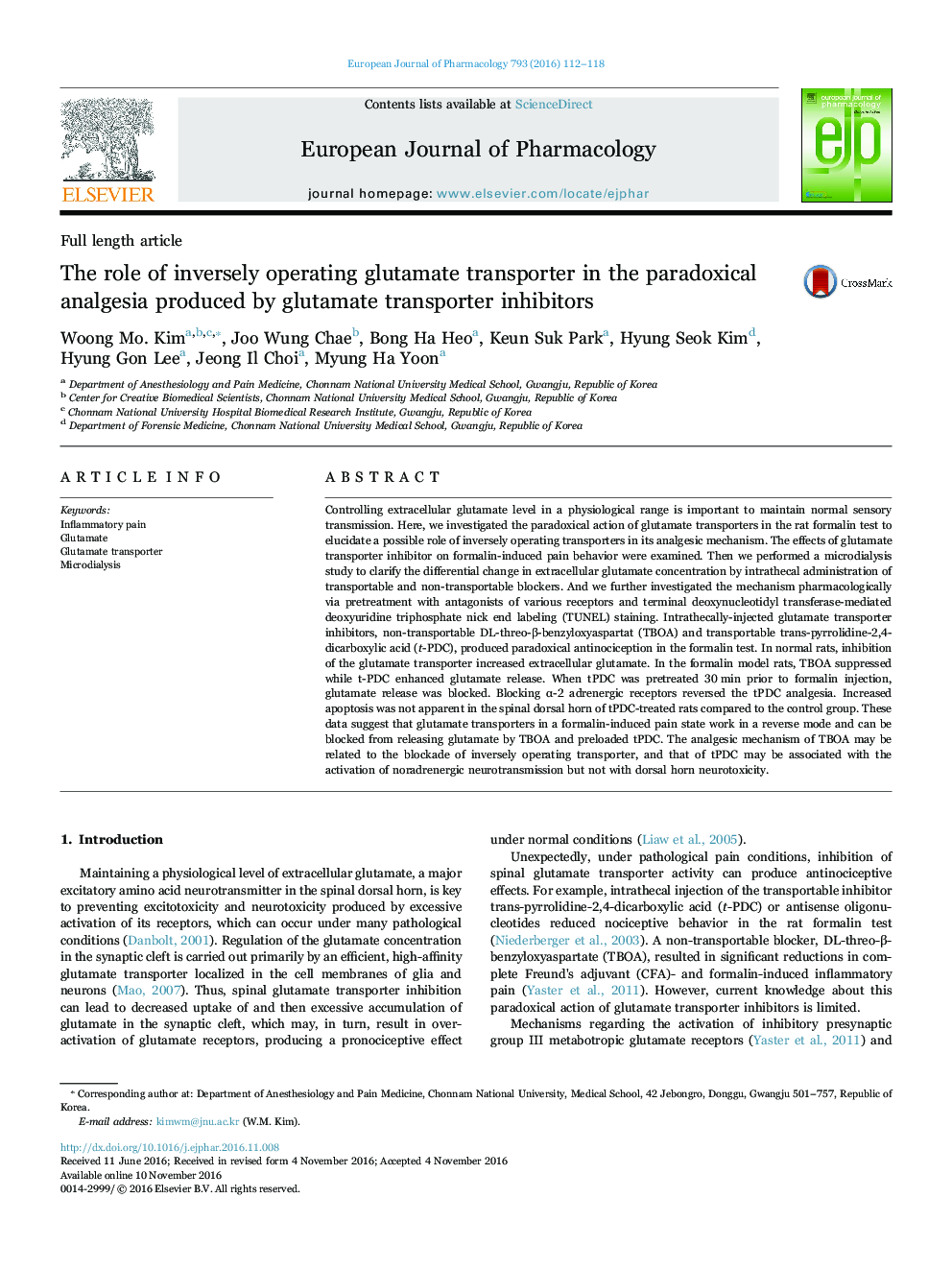| کد مقاله | کد نشریه | سال انتشار | مقاله انگلیسی | نسخه تمام متن |
|---|---|---|---|---|
| 5554769 | 1558887 | 2016 | 7 صفحه PDF | دانلود رایگان |
Controlling extracellular glutamate level in a physiological range is important to maintain normal sensory transmission. Here, we investigated the paradoxical action of glutamate transporters in the rat formalin test to elucidate a possible role of inversely operating transporters in its analgesic mechanism. The effects of glutamate transporter inhibitor on formalin-induced pain behavior were examined. Then we performed a microdialysis study to clarify the differential change in extracellular glutamate concentration by intrathecal administration of transportable and non-transportable blockers. And we further investigated the mechanism pharmacologically via pretreatment with antagonists of various receptors and terminal deoxynucleotidyl transferase-mediated deoxyuridine triphosphate nick end labeling (TUNEL) staining. Intrathecally-injected glutamate transporter inhibitors, non-transportable DL-threo-β-benzyloxyaspartat (TBOA) and transportable trans-pyrrolidine-2,4-dicarboxylic acid (t-PDC), produced paradoxical antinociception in the formalin test. In normal rats, inhibition of the glutamate transporter increased extracellular glutamate. In the formalin model rats, TBOA suppressed while t-PDC enhanced glutamate release. When tPDC was pretreated 30 min prior to formalin injection, glutamate release was blocked. Blocking α-2 adrenergic receptors reversed the tPDC analgesia. Increased apoptosis was not apparent in the spinal dorsal horn of tPDC-treated rats compared to the control group. These data suggest that glutamate transporters in a formalin-induced pain state work in a reverse mode and can be blocked from releasing glutamate by TBOA and preloaded tPDC. The analgesic mechanism of TBOA may be related to the blockade of inversely operating transporter, and that of tPDC may be associated with the activation of noradrenergic neurotransmission but not with dorsal horn neurotoxicity.
Journal: European Journal of Pharmacology - Volume 793, 15 December 2016, Pages 112-118
